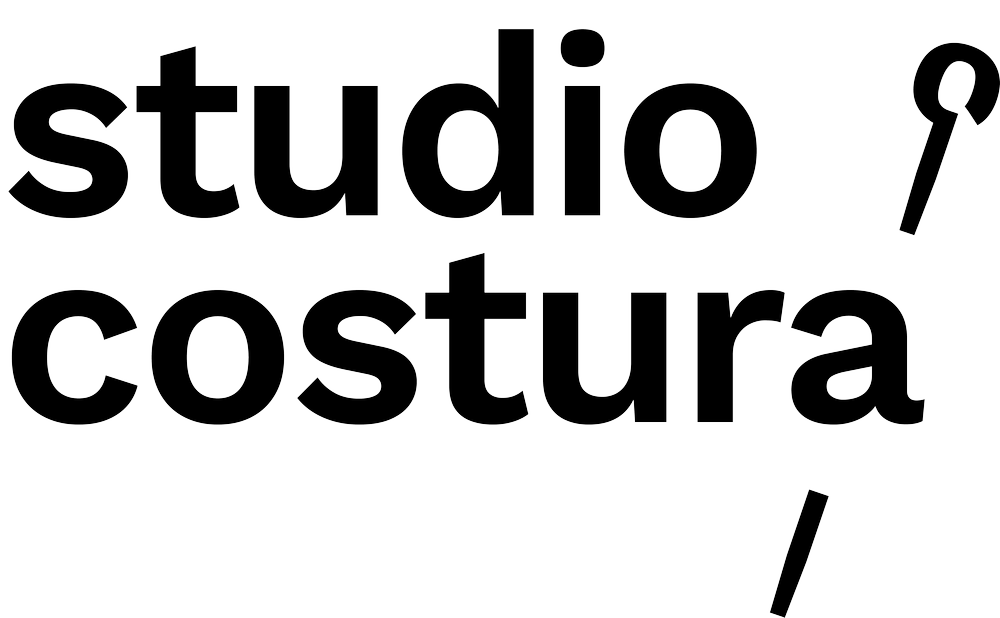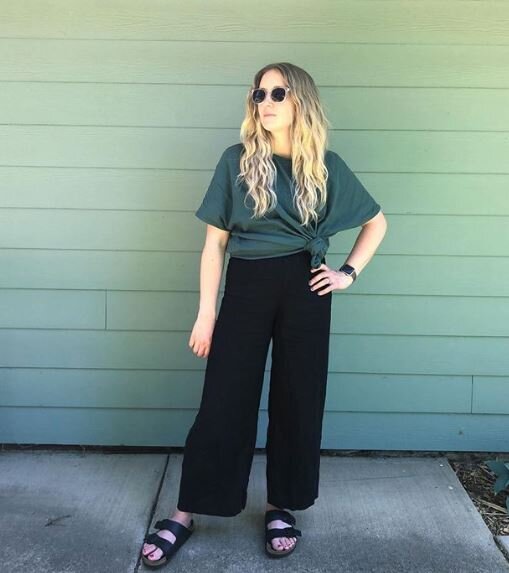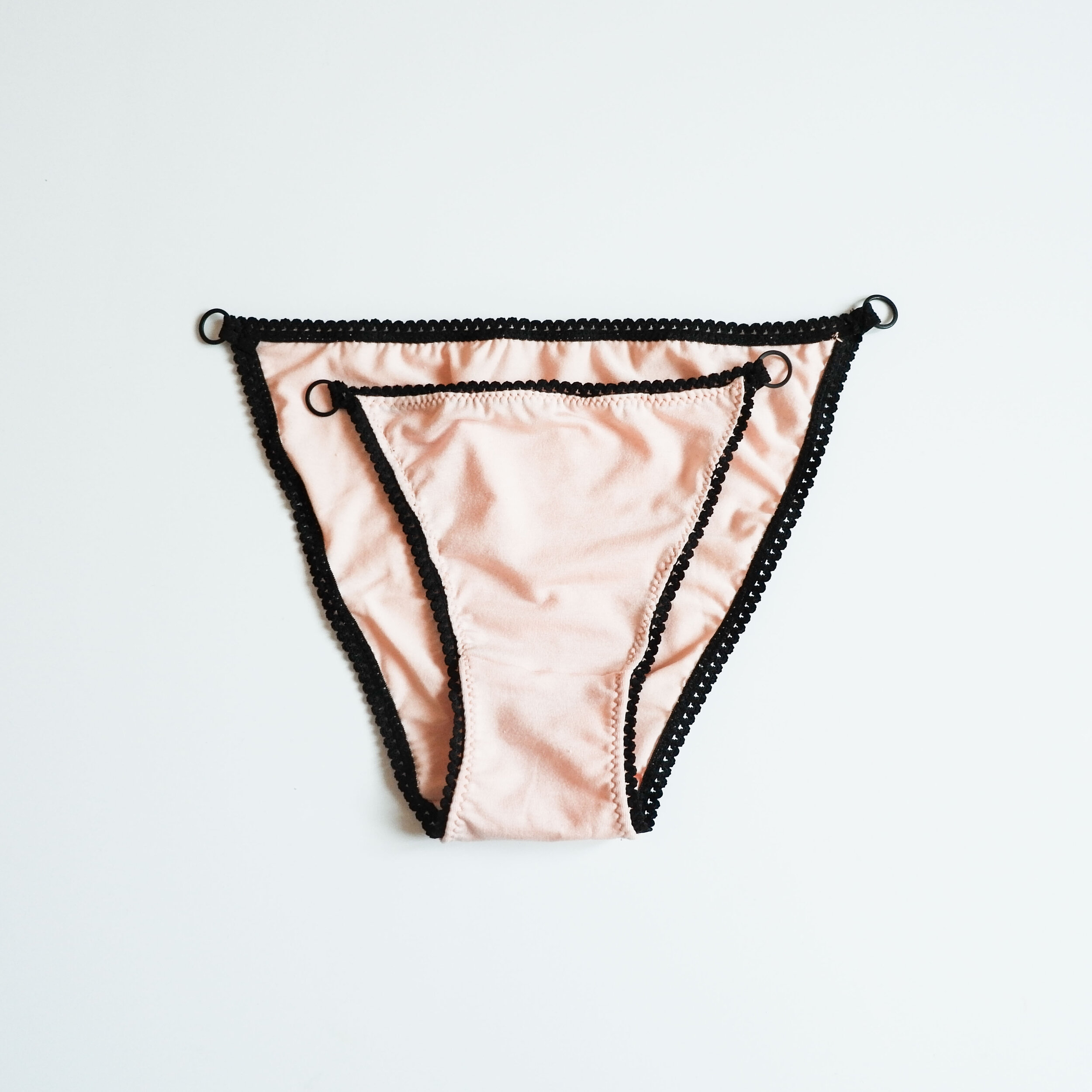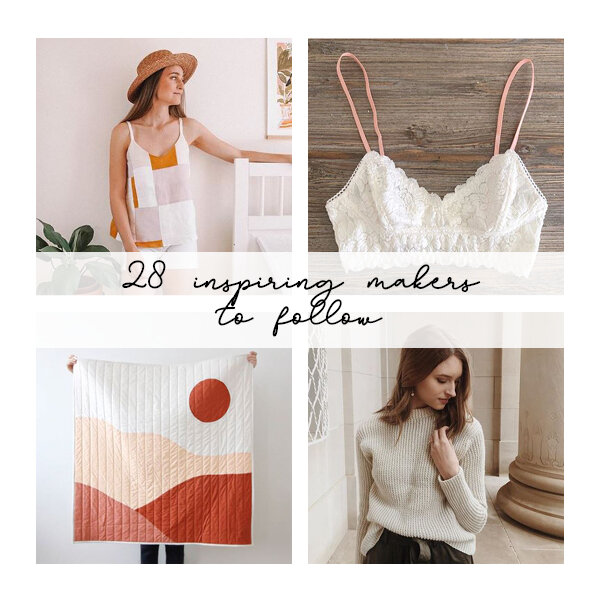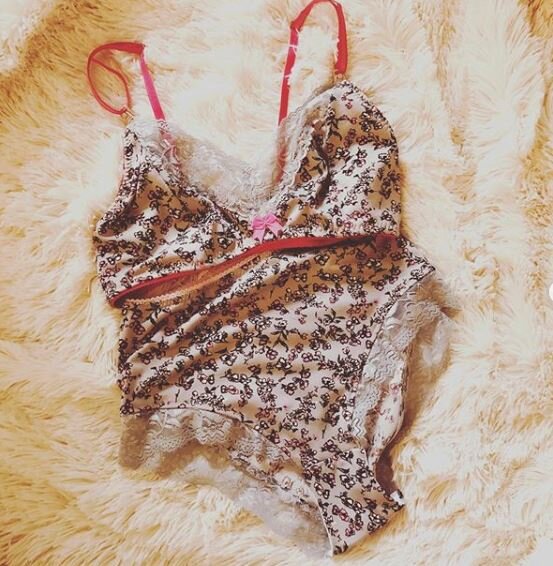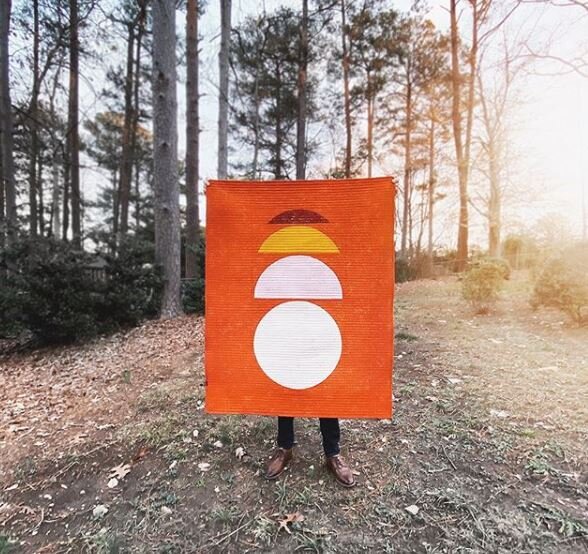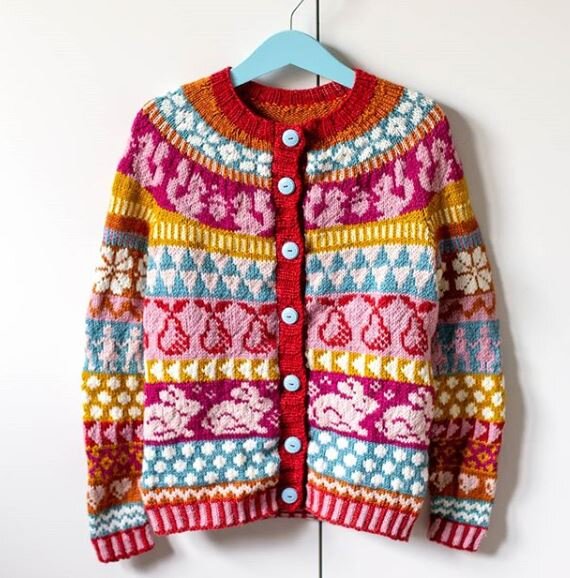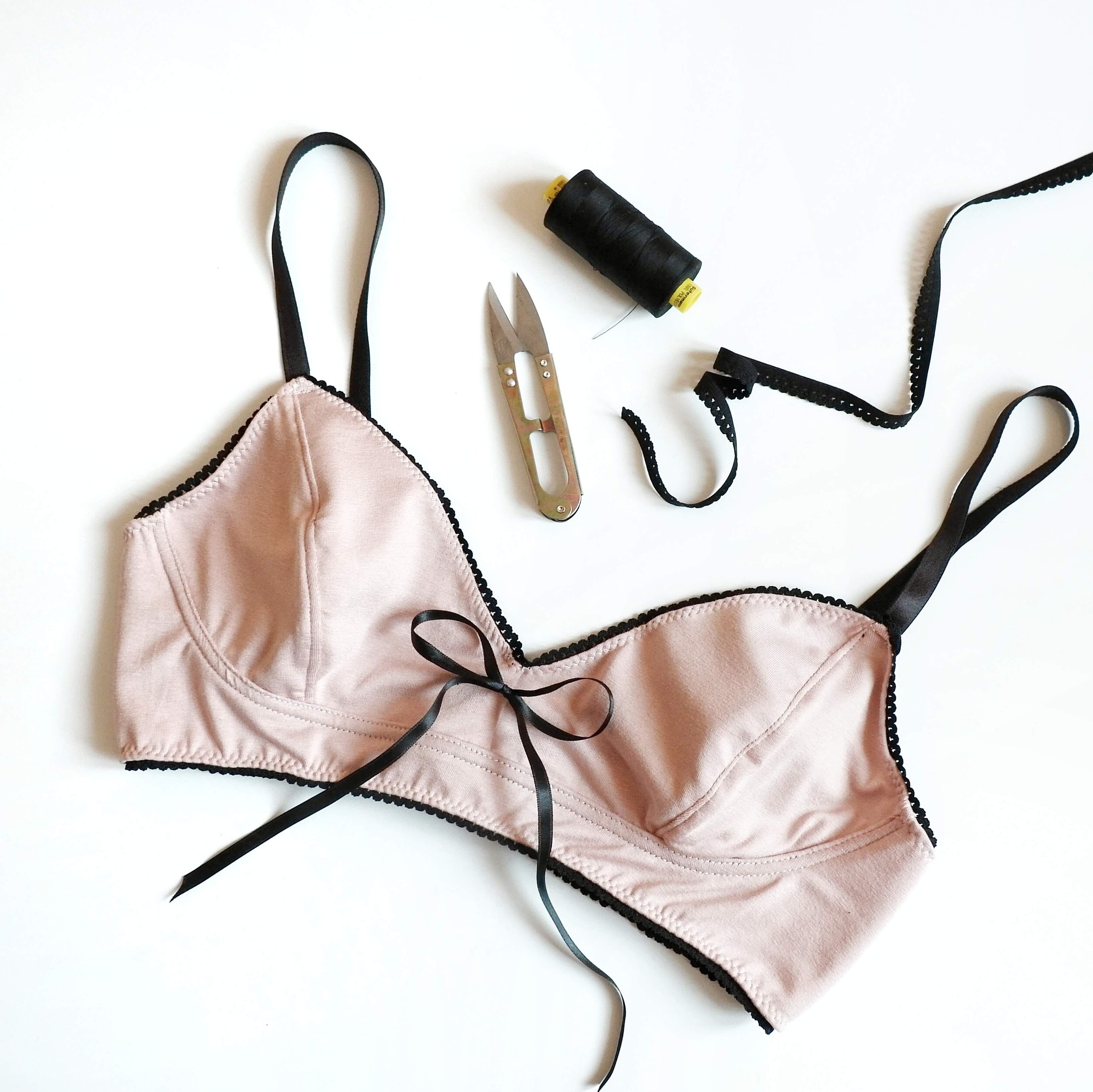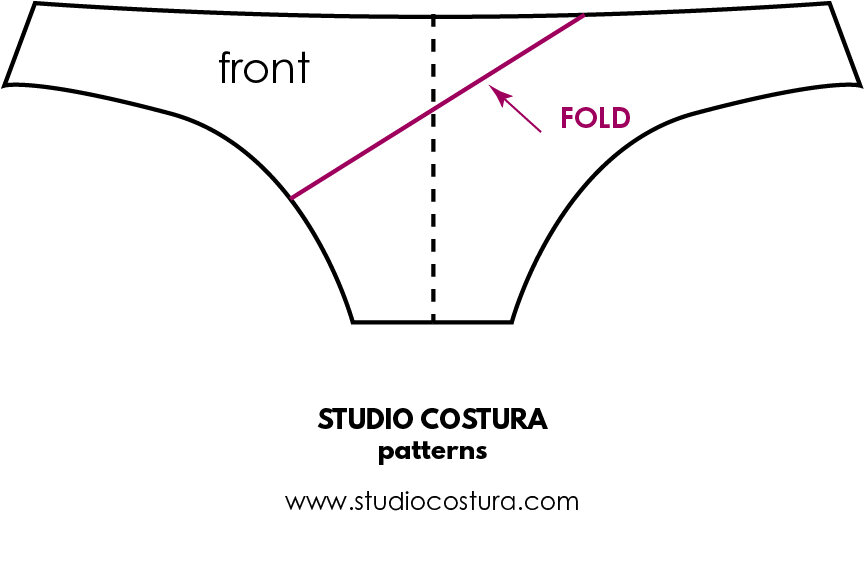Another year of Me Made May is almost over and I wanted to write a recap post here on the blog to gather all the photos together + add the links to the patterns I’ve used. So first off, many things were different this year...a strict lockdown due to the pandemic is the main thing of course. Luckily my health and my families health is good and for me the biggest thing that has changed is that I stayed at home almost all of the month, and only little by little we’ve started to go out for walks and now I’ve been able to go to work on my projects over at the academy too (no classes yet but my brain definitely appreciates changing the work environment and spending time out of house again).
Clothing wise it was very different of course as I usually go out early in the morning, drop off my kid at school, go to work, pick her up, sit at the park/take her to the activities and I usually get back home quite late. Which means I always have to wear many layers as the month of May here in Madrid is crazy weather wise...it’s chilly in the morning and usually very warm (or directly hot as hell in the end of the month) in the afternoon, so I’m always out and about with my backpack on to carry everything with me. So this definitely wasn’t a thing during this month...and I’m actually happy about it. Lately the days were so stressful, I felt that I wasn’t at home at all, that all we did was just sleep there...and then life changed dramatically. These are big contrasts, I know, I’d be more than happy to just slow down a bit, not to live in an eternal lockdown, but I’m just leaving it there...it has been nice in that sense. Of course it has been a terrible time in the world, don’t get me wrong please!
So, there was no need to put on various layers but I didn’t enter the sweatpants/hoodie only land either...by following my makes during this month you can probably already see that my style is super casual and I actually don’t own any fancy clothes. That said, for me it’s important to put “real” clothes on even when I don’t / can’t go out. Especially during this lockdown when maintaining a healthy daily routine was one of my main goals to keep on functioning as well as I could. I know, you are at home, maybe even on the sofa a lot (or not, if you have kids, haha)...but I couldn’t live in PJs for two months, it’s just depressing in my opinion. Putting on my normal clothes, the ones I would use when I’d go to work, helps me to actually feel like working from home and getting things done (something that has been “very interesting” to make happen when trying to do it while homeschooling). So yeah, I’m of course not saying anything if you’re into lounging around your house with leggings on all the time, I’m just saying that for my mental health, I couldn’t do this (go figure, haha…).
How does all of this affect this year's Me Made May for me and how did I feel participating in the “challenge” this year? Well, it has been easier and for various reasons:
I wasn’t in a rush to go out in the morning which means I had more time to see what I’d like to wear.
As another year has passed by I actually have more memades to put on! Especially sweaters as you’ll see below...I’m super proud of my handknit sweater collection, I really do wear them a lot and they bring me so much joy (and turns out that May is a sweater month which means I wear wool sweaters more than 6 months a year, haha!).
I had more time to take photos and document the month. Yes, this part is the worst, it’s my 5th year and I’m very aware of how I really don’t want to take selfies after the first week or so. The good thing was that this year I had more time to actually document my makes which made the whole process better.
I knew I wasn’t going to post a photo on my feed every day which meant that I didn’t stress about participating. I think that many people haven’t really understood the event in that sense: this event does not require you to post a picture of you EVERY DAY. You can do it if you feel like it but you can also do just one day, once a week or whatever feels right to you. I’ve been reading comments like “I’m not participating in Me Made May this year as I can’t/don’t want to post pictures of myself every day” or “I don’t have enough clothes to participate”. But this is not at all the point of it all! For me the point is to see inspiring makes through the hashtag, no one is going to count your photos! Have you sewn one garment and you’re wearing it and you actually feel like posting a photo? Well, do it! That’s the magic of this community event...sharing what you have made, one, two or thirty times. If you’re new to sewing you can’t possibly have a different memade garment for every day but that’s totally OK, you should be comparing your sewing practice with people who have been doing this for years, maybe even decades! Anyway...sorry about the rant but I just wanted to write about it to express my opinion. I also think that many people “burn out” after the first week because they set really high standards and this really isn’t a race. It’s just an opportunity to share with your community and get inspired! I just find it sad that people think that if they don’t participate every day they shouldn’t participate at all...we will miss your cool makes (or your one, first make) that way!
So, all in all, this year the documenting part has been quite easy for me. But the past ones I guess weren’t because I searched through my blog archives and I’ve only written one other recap post and it was in May 2016, my first year doing it, haha. So let’s see what I wore, which patterns were used and all that stuff.
Otro año de Me Made May está acabando y quería escribir un post de recopilación aquí en el blog para juntar todas las fotos + añadir enlaces a patrones que he usado. Primero decir que la situación era muy diferente este año...el confinamiento estricto por la pandemia era lo que más afectaba a todo, claro. Por suerte mi salud y la salud de mis familiares está bien y lo que más afectó a mi vida era quedarse en casa casi todo me les, solo hace poco que podemos salir poco a poco y ahora he podido ya venir a la academia para trabajar con mis proyectos (no hay clases todavía pero mi cerebro aprecia bastante el hecho de poder cambiar de ambiente de trabajo para variar de nuevo).
El tema de ropa era muy diferente también porque en mi vida normal suelo salir temprano de mi casa, dejar la niña en el cole, ir a trabajar, recogerla, parque/actividades y normalmente llego a casa tarde. Eso significa que siempre tenía que llevar diferentes capas de ropa ya que el mes de mayo es un poco loco aquí en Madrid hablando del tiempo...hace fresco pro la mañana y normalmente hace muy buen tiempo (o directamente hace un calor que flipas en el final del mes) por la tarde, así que siempre voy con la mochila puesta para llevar todo lo necesario conmigo. Así Que desde luego esto era muy diferente este me...y la verdad que yo me alegro. Últimamente mis días estaban llenos de prisas, me sentía que nunca estaba en casa, que solo íbamos a dormir allí...hasta que la vida cambió muchísimo. Son contrastes muy grandes, lo sé, me encantaría simplemente que todo vaya un poco más lento, no vivir en un confinamiento obviamente pero lo dejo allí...en mi caso fue bueno poder parar un poco, en este sentido. Por supuesto ha sido un tiempo muy difícil en el mundo, no quiero quitarle importancia a ese hecho!
Así que no había que llevar varias capas pero tampoco entré en el mundo de solo llevar chándal/sudadera tampoco...si me has seguido durante este mes habrás visto que la ropa que llevo es super informal y realmente no es que tenga tanta ropa. Dicho eso, para mí es importante vestirse “normal” aunque no quiero/puedo salir de casa. Especialmente durante el confinamiento necesitaba mantener una rutina diaria saludable para poder seguir funcionando lo mejor que podía. Ya sé, estás en casa, quizás incluso pasas más tiempo en el sofá (o no, si tienes niños, jaja)...pero yo no podría vivir en pijama dos meses, para mí personalmente es deprimente. Llevando mi ropa normal, lo mismo que me pongo cuando voy a currar, me hace sentir que estoy preparada para currar en casa y realmente conseguir adelantar cosas (algo que ha sido “muy interesante” cuando lo juntas con las tareas de cole en casa). Así que sí, no digo nada si estás por casa en leggings, todo bien, pero para mi salud mental yo no podría hacerlo (todo normal no, jaja…).
Cómo afectó todo eso a Me Made May de este año para mí y cómo me sentí al participar en “el reto” este año? Pues ha sido más fácil por varias razones:
No tenía prisa por las mañanas, cosa que hacía más fácil el proceso de elegir la ropa que me ponía.
Como ha pasado otro año, tengo más ropa que he hecho para ponerme! Especialmente los jerseys como verás más abajo...estoy super orgullosa de mi colección de jerseys tejidos a mano, me los pongo un montón y me hacen muy feliz (y resulta que el mes de mayo sí que es un mes de jerseys así que yo me pongo jerseys de lana durante más de 6 meses al año, jaja).
Tenía más tiempo de sacar fotos y documentar el mes. Sí, esta parte es la peor, es mi quinto año y entiendo totalmente como no apetece sacarte más selfies después de la primera semana o así. Lo bueno de este año ha sido que tenía más tiempo para sacar las fotos que hizo todo el proceso más fácil.
Sabía que no iba a publicar una foto cada día en mi feed así que no me estresé por participar. Creo que mucha gente no ha entendido bien de qué va este evento en este sentido: el evento/reto no consiste en subir una foto de ti CADA DÍA. Lo puedes hacer si te apetece pero también lo puedes hacer solo un día, una semana o lo que sea que te venga bien. He leído comentarios como “ no participo este año porque no quiero/puedo subir fotos de mí todos los días” o “no tengo suficientes prendas hechas por mí para participar”. Pero si no va de esto el Me Made May! Para mí el sentido de todo esto es ver fotos de ropa que te inspiran a través de este hashtag, nadie va a contar cuántas fotos has subido! Has cosido una prenda, lo estás llevando un día y te apetece subirlo a tu cuenta? Pues hazlo! Allí está la magia de este evento en nuestra comunidad de costura...compartir lo que has hecho, una, dos o treinta veces. Si acabas de empezar a coser no es realista que tengas una prenda diferente para cada día del mes y eso está bien, no deberías comparar tu hobby con el hobby de la gente que lleva años, incluso décadas, haciéndolo! De todas maneras...perdonad por la chapa pero quería escribir sobre mi opinión. Creo que mucha gente “se quema después de la primera semana porque se ponen un nivel muy alto y esto no es una carrera para nada. Solo es una oportunidad para compartir cosas con tu comunidad e inspirarte. Me parece muy triste que por pensar que si no participas todos los días, no lo haces ningún día, y no vamos a ver tus prendas (o esa primera prenda) nunca!
Así que este año no me costó mucho. Pero en los últimos años parece que sí porque rebusqué en los archivos del blog y solo he hecho la recopilación una vez, en el 2016 que fue mi primer año, jaja. Así que vamos a ver qué ropa me ponía y qué patrones he usado.
First, the sweaters. May is a super weird month here in Madrid because it’s kind of nice already outside but it can be cold too and the houses are not warmed up yet but you don’t really want to pay for the heating anymore...so the first weeks are definitely still sweater friendly if you ask me, hehe. Again, as I stayed inside I could wear my sweaters just like that...if I knew I had to pick up my kid at school I would have probably changed into something less warm as once you go out at 4 o’clock in the afternoon it’s really warm. All my sweaters are up on Raverly if you want to see the details, I’ll be naming the patterns and designers separately here.
Primero los jerseys. El mes de mayo es super raro en Madrid porque hace bueno fuera pero puede hacer frío también (cuarenta de mayo) y las casas todavía se mantienen frescas pèro no quieres poner la calefacción...así que para mí las primeras semanas desde luego son de jerseys todavía. De nuevo, como estuve en casa me ponía mis jerseys, si hubiera tenido que salir a por mi hija al cole por la tarde no hubiera podido ir así porque hace más calor según qué hora. Todos mis jerseys están en Raverly si queréis ver los detalles, pongo aquí los nombres de los patrones y los diseñadores.
Stonecrop Pullover by Andrea Mowry // Aldous by Isabell Kraemer.
No Frills Sweater by Petite Knit // Balloon Cardigan by Petite Knit.
Pink Velvet by Andrea Mowry // My own invented pattern.
Long sleeve t-shirts: striped viscose French terry with a pattern from Ottobre Design and some weird blend French terry with the Mandy Boat Tee free pattern by Tessuti Patterns. I really like these two and I don’t wear them too much actually because there’s no time for mild weather here where I live, you’re either wearing a wool sweater or a t-shirt, haha. But….now that I actually made a cardigan (the Balloon Cardigan is a recent make) I figured these types of t-shirts can be layered under a wool cardigan and then I could wear them a lot more (I know, genius right, haha?). But I do always take them with me when I go to Estonia, they are perfect for the summer in the North.
Camisetas de manga larga: viscosa de rayas tipo French terry con el patrón de Ottobre Design y una mezcla rara de tejido, también tipo French terry con el patrón gratis de Mandy Boat Tee, de Tessuti Patterns. Me encantan estas dos camisetas pero no me las pongo mucho porque no hay casi entretiempo donde vivo yo, o me pongo un jersey de lana o tirantes, jaja. Pero...ahora que he hecho mi primer cardigan (el Balloon Cardigan lo terminé hace poco) he visto que este tipo de camisetas van muy bien para poner debajo de los cardigans (ya sé, qué idea genial de mi parte, no, jaja). Pero eso sí, siempre las llevo a Estonia porque para el verano del norte van genial.
Short sleeves. First up one of my most worn garments ever, the Donna blouse by La Maison Victor. Pair it with a geometric viscose print and you’ve got me hooked. It’s a couple of years old and I wear it like once a week during the summer. The black viscose sleeveless top is from Ottobre Design and it’s a great basic (should make it in every color).
Manga corta: Primero una de mis blusas que más me he puesto en todos los tiempos, la blusa Donna de La Maison Victor. Combinalo con un estampado geométrico de viscosa y me tienes ganada. Ya tiene un par de años y me lo pongo mínimo una vez a la semana en el verano. El top sin mangas en viscosa negra es de Ottobre Design y es un buen básico (que debería hacer cada color).
Not a good photo but a cute one of me and my kid on one of our first walks outside after two months! This wrap top is one of my favourites, I made it last summer out of a ribbed knit and I really like it (better photo here). Next up is another work horse from my summer wardrobe, the Ogden cami by True Bias in floral viscose print (+ now obligatory mask). I have four Ogdens and two Ogden dresses so I guess you can say that I like the pattern, haha.
No es una foto muy buena pero me gusta mucho porque es del primer paseo que di con mi hija después de dos meses! Este top cruzado es uno de mis favoritos, lo hice el verano pasado con un punto de canalé y me encanta (aquí se ve mejor). Lo siguiente es uno de mis básicos de verano, el top Ogden de True Bias en viscosa floral (+ la mascarilla ahora obligatoria). Tengo cuatro Ogdens y dos vestidos con el mismo patrón así que se puede decir que me gusta bastante el patrón, jaja.
Another Donna blouse, another lovely viscose print. And the black woven t-shirt is made using a knit pattern, I wrote about the difference between knits and wovens in this post. Also wearing the Moss skirt by Grainline Studio in black stretch corduroy. This is the ONLY skirt that actually fits me in my wardrobe (my wardrobe is small, haha) and sadly the color has worn out a bit in the sun...but I’m still wearing it, you can’t see the color problem from far away, haha. I really need to make another because this style (sitting just below my natural waist) together with a slightly stretchy fabric is a life saver, it’s both comfortable and forgiving when you lose/gain (:D) a bit of weight.
Otra blusa Donna, otro estampado bonito de viscosa. Y la camiseta negra está hecha con una tela plana también pero el patrón es de tela de punto. Escribí sobre las diferencias de punto y tela plana en este post. También allí va la falda Moss de Grainline Studio en micropana elástica negra. Esta es la ÚNICA falda que me cabe en todo mi armario (que es pequeño, jaja) y por desgracia el color ya se está yendo un poco por el sol...pero yo me lo pongo igual, que de lejos no se ve el problema de color, jaja. Necesito hacerme otra porque este estilo (que se queda justo debajo de mi cintura) junto a la tela ligeramente elástica es un salvavidas, es igual de cómodo si pierdes/ganas (:D) un poco de peso.
And this t-shirt with viscose bananas, another basic Ottobre Design pattern. I made a matching one for my kid back when I sewed this one but she has already outgrown hers I think. But yeah, can’t leave a banana print at the fabric shop, am I right?
Y esta camiseta de punto de plátanos en viscosa, otra camiseta básica de Ottobre Design. Hice otra a juego a mi hija pero la suya ya le va pequeña creo. Pero sí, quién puede no llevar a casa un estampado de plátanos cuando lo ve en la tienda, verdad?
Jackets. Another department that wasn’t really shown during this month because I mainly went out during the day and I didn't need a jacket! But I did get two photos. This Nenuphar kimono style jacket by Deer and Doe Patterns is a really cute one. I made it in linen and the fabric really shows well the design elements like the cut out details on the collar and the pockets (I’ve also made it in viscose and loved the completely different flowy result).
Now there are two things with this jacket. First of all I really like how it looks because it gives me the Elizabeth Suzann vibe which I really like and the color and the shape are very pretty in my opinion (the fabric actually has tiny stripes in two neutral tones, it’s a real winner). Then again I love seeing linen on Instagram photos worn by other people but I can’t really fit it into my own wardrobe!!! Because it wrinkles like hell...maybe?! Because the shapes are too structured...something I love seeing on the photos but can’t really see on myself...maybe?!
Anyway, I like this jacket, but I don’t wear it a lot, apart from the linen thing I’ve mentioned, there’s the weather issue too. There are like two days in a year when I’d wear it here in Madrid, it’s either too cold or too hot. I think it is a good garment to have when you work in an office with lots of AC so you can throw it over a sleeveless garment while you’re sitting at your desk in summer. But in my reality where this is not happening (keeping that AC on the minimum to not waste energy over at the academy, read: to not waste money, haha)...so sadly I don’t wear this jacket a lot. I’m telling you all this just to mention that it’s something to think about before making a garment. It might look cute, you might make a great job at sewing it, the drape is right, the fabric is right...but is your life right for the garment, haha?! I wrote about this topic in these two posts about choosing fabrics, fabric composition and drape, if you’re into reading more about how to make good choices fabric and lifestyle wise.
The only real outerwear piece that made its way to Me Made May is my softshell jacket, the Serra jacket by Pauline Alice. I wear it a lot during fall and spring, you can read more about it in this post. I actually hoped to finish and photograph another jacket during this month but I didn’t make it happen (probably because I wasn’t wearing any jackets…), this improvised canvas jacket only needs buttonholes!!!
Chaquetas. Otra “sección” que no salió mucho durante este mes porque como solo salía de día no solía ponerme chaquetas. Pero saqué dos fotos. Esta chaqueta tipo kimono es el Nenuphar de Deer and Doe Patterns y me gusta mucho. Lo hice en lino y esta tela realmente resalta bien los detalles del diseño como los cortes triangulares en la solapa y en los bolsillos (también lo tengo en viscosa y queda muy diferente con una tela que tiene mucha caída).
Pasan dos cosas con esta chaqueta. Primero me gusta mucho cómo queda porque me recuerda a Elizabeth Suzann y el color y la forma son muy bonitos en mi opinión (la tela hasta tiene unas mini rayas en dos colores complementarias, es ideal!). Me encanta ver prendas de lino en las fotos de otra gente en Instagram pero no consigo adaptarlo a mi armario!!!Quizás porque se arruga mucho? Puede ser… Porque tiene una forma muy definida...algoq ue me encanta en las fotos pero cuando me la pongo simplemente “no me veo” con ella?
O sea me gusta mucho la chaqueta pero la verdad es que no me lo pongo mucho, está allí el tema de lino pero también cuestión de tiempo. De nuevo, en Madrid hay como dos días al año cuando me lo puedo poner, luego o hace demasiado frío o demasiado calor. Creo que podría molar mucho si trabajas en el verano en una oficina con mucho aire acondicionado y te lo pones encima de un top y así vas bien. Pero en mi vida eso ahora mismo no está pasando (en la academia está el aire bajito para no gastar energía...bueno y el dinero, jaja)...así que al final no me la pongo mucho. Os cuento todo eso porque quiero decir que es importante pensar en cosas así antes de hacerte una prenda. Puede que sea bonito, lo hayas cosido bien, la caída va bien, es la tela correcta...pero va bien con tu vida, jaja? He escrito sobre este tema en los dos posts sobre cómo elegir telas, composición de tela y la caída, si os interesa leer más sobre cómo elegir bien las telas que también vayan acorde con tu vida diaria.
La única chaqueta de primavera que sale en mis fotos de Me MAde May es esta chaqueta de softshell, la Serra de Pauline Alice. Me lo pongo mucho en la primavera y en el otoño, puedes leer más sobre ella en este post. Quería también terminar y fotografiar otra chaqueta este mes pero no lo conseguí (probablemente porque ya hace calor…), esta chaqueta de lona con el patrón improvisado necesita solo los ojales!!!
Dresses. I don’t have many dresses in my wardrobe...I have made quite a lot of dresses but none of them fit me anymore, haha. But I made two Ogden cami dresses (pattern by True Bias) last summer and I was living in them so I think I’m getting back to the dresses again! I love how this shape is perfect for hot summers around here, it feels like nothing on. Basically it’s the top but shorter (mine measures about 20 cm from the V neck on the front if I remember correctly) with a gathered rectangle for the skirt (the width of the rectangle is the width of the fabric, I found that this is the exact amount of volume I like for the skirts). Both versions are made in viscose.
Vestidos. No tengo muchos vestidos en mi armario...he hecho bastantes vestidos pero ninguno me queda bien ya, jaja. Pero el verano pasado hice dos vestidos de Ogden cami (patrón de True Bias) y vivía en ellos así qeu creo que estoy volviendo a los vestidos! Me gusta mucho su forma, es perfecto para los veranos calurosos de aquí, es como llevar nada. Básicamente es como el top pero más corto (si no recuerdo mal, mide 20 cm desde el pico de escote en el delantero) con un rectángulo fruncido para la falda (el ancho de tela es el ancho de rectángulo, es justo la cantidad de vuelo que necesito para mi gusto). Las dos versiones están hechas con viscosas.
And my latest make here and also the only thing I’ve sewn for myself during the last months!), which actually is not finished yet, haha, is the Jessica dress by Mimi G. I had been seeing this dress around the web and a couple of students from the academy had been sewing them too so I gave in and made myself one. I was a bit concerned that the gathers exactly on my waistline wouldn’t be something I like but the result is cute! Again I used the width of the fabric for the width of the skirt and this is the amount I feel comfortable with. I really love this floral viscose print!
For the last dress make here’s the Roberts Collection dungaree dress by Marilla Walker. I can’t believe I haven’t worn this dress already this season, it’s 100% me style wise. Well, actually I know why I didn’t, I was too lazy to iron it, haha. The fabric I used is a super soft tencel twill and I love this fabric as it has nice drape but it also has a nice body which means you can make patterns with straight lines like this one beautifully.
Y aquí mi más reciente costura (y también lo único que he cosido para mí en los últimos meses!), que realmente no está terminado todavía, jaja, el vestido Jessica de Mimi G. Había visto este vestido en las redes y un par de chicas de la academia también lo habían cosido así que decidí también hacerme uno. Estaba un poco indecisa ya que nos uelo llevar frunces justo en la cintura pero el resultado ha quedado guay! De nuevo usé el ancho de tela para el rectángulo de la falda, así se crea la cantidad de frunce que me gusta a mí. Me encanta este estampado floral!
Para lo último aquí está el vestido peto de Roberts Collection, patrón de Marilla Walker. Me cuesta creer que es la primera vez que me lo pongo en este mes porque es 100% mi estilo. Bueno, realmente sé por qué...que me daba pereza planchar la falda, jaja. La tela que usé es una sarga de tencel super suave y me encanta esa tela ya que tiene una caída muy buena pero también tiene cuerpo así que va bien para líneas rectas como en este patrón.
Loungewear and lingerie. It’s kind of weird that lingerie didn’t pop up on my feed more as I am sewing a lot of it as you can imagine but there’s the modelling question of course, haha. Also there’s something weird for me about showing my underwear out in public in daily basis, don’t ask, haha. I did wear my Suki robe by Helen’s Closet every day, it’s such a nice piece and I’m so glad I have it in my wardrobe (you can read about this make in this post). Underneath I’m also wearing my summer lux PJs: a silk Ogden cami and silk PJ shorts (long story, I don’t usually wear fancy silk PJs but this is a happy exception, haha)!
I only posted one lingerie pic as I accidentally took a shot of this set the day I put it on, it’s a self drafted foam cup bra with no underiwires (a pattern I’ll try to publish soonish...I really want to make a bra specifically for small cup sizes) and Stella panties with a lace hack (this tutorial is available in my e-book about sewing panties, get it for free when you subscribe to my newsletter). I didn’t post any other lingerie makes but you can be sure I was wearing something memade every day obviously, haha.
Ropa de estar por casa y lencería. Es un poco raro quizás que lencería no ha salido más en mis fotos ya que coso mucho de eso pero claro, quién iba a ser la modelo, jaja. También me parece algo raro enseñar las bragas que me pongo a diario, jaja. La bata Suki de Helen’s Closet me lo he puesto todos los días, es una prenda muy guay y estoy feliz por poder tenerlo en mi armario (puedes leer más sobre ella en este post). Debajo también llevo mi pijama de verano de seda, puro lujo: Ogden cami de seda junto a un pantalón corto en la misma tela (una historia larga, normalmente no tengo pijamas de seda pero es una excepción muy buena, jaja).
Solo subí una foto de lencería ya que por casualidad le saqué la foto un día antes de vestirme, es el sujetador con un patrón propio, sin aros pero con foam ( un patrón que me gustaría publicar en el futuro, especialmente pensado para copas pequeñas) y las braguitas Stella con la modificación de encaje (el tutorial viene en el libro electrónico sobre coser braguitas que es gratis si te apuntas a mi newsletter). No subí más fotos de lencería pero algo de lo mío me lo llevo todos los días, jaja.
And that’s it for this years Me Made May for me. As I mentioned earlier, it was easier this year so I might be motivated for documenting for the next year too, haha. I definitely had a lot of fun seeing other peoples makes and they have been very inspiring. I already wrote a post about seamstresses who inspire me with their projects this spring but I’ll add some more photos here specifically about Me Made May so you can take a look too!
In case you haven’t seen I’m running a sale during this weekend over at Studio Costura Shop so if you’ve been inspired to make yourself some lingerie you can check my patterns out!
Y ya está para este año de Me Made May para mí. Como dije antes, este año ha sido más fácil así que igual me animo documentarlo bien el año que viene también, jaja. Me encantó ver lo que subía otra gente, me he inspirado mucho al ver sus prendas. Ya escribí hace poco el post sobre las costureras que me inspiran esta primavera pero voy a añadir por aquí también más fotos específicamente de Me Made May que podéis ver!
Si no lo habéis visto todavía, en Studio Costura Shop tenemos ahora el descuento en todos los patrones por si os habéis inspirado para coser algo de lencería!
